Germany enjoys 45% of its electricity supply from renewable sources such as solar, wind, hydro, and biomass – which has doubled over the last 10 years, while the rest is supplied by fossil and nuclear sources. However, when it comes to primary energy consumption – total energy supplies accounting for all sectors including supply, transportation, and conversion losses – the country is still predominantly supplied by fossil fuels; rank-ordered in terms of supply: Imported Oil, Imported Gas, Local Coal and Imported Coal. This heavy reliance on imported energy exposes the German economy to external agents and influences, which is being observed during the Russian Gas crisis.
Germany ranks as the 7th top energy-consuming and the 9th top electricity-consuming country in the world. The current primary energy consumption stands at 262.5 MTOE, ranking it as the biggest consumer of energy in the European Union – accounting for 20% of the energy needs of the region. With the limited inland potential for energy production, the reliance on exports is somewhat justified. However, there has been a policy thrust toward more energy autarky, ‘fueled’ by indigenous renewable resources and hydrogen production.
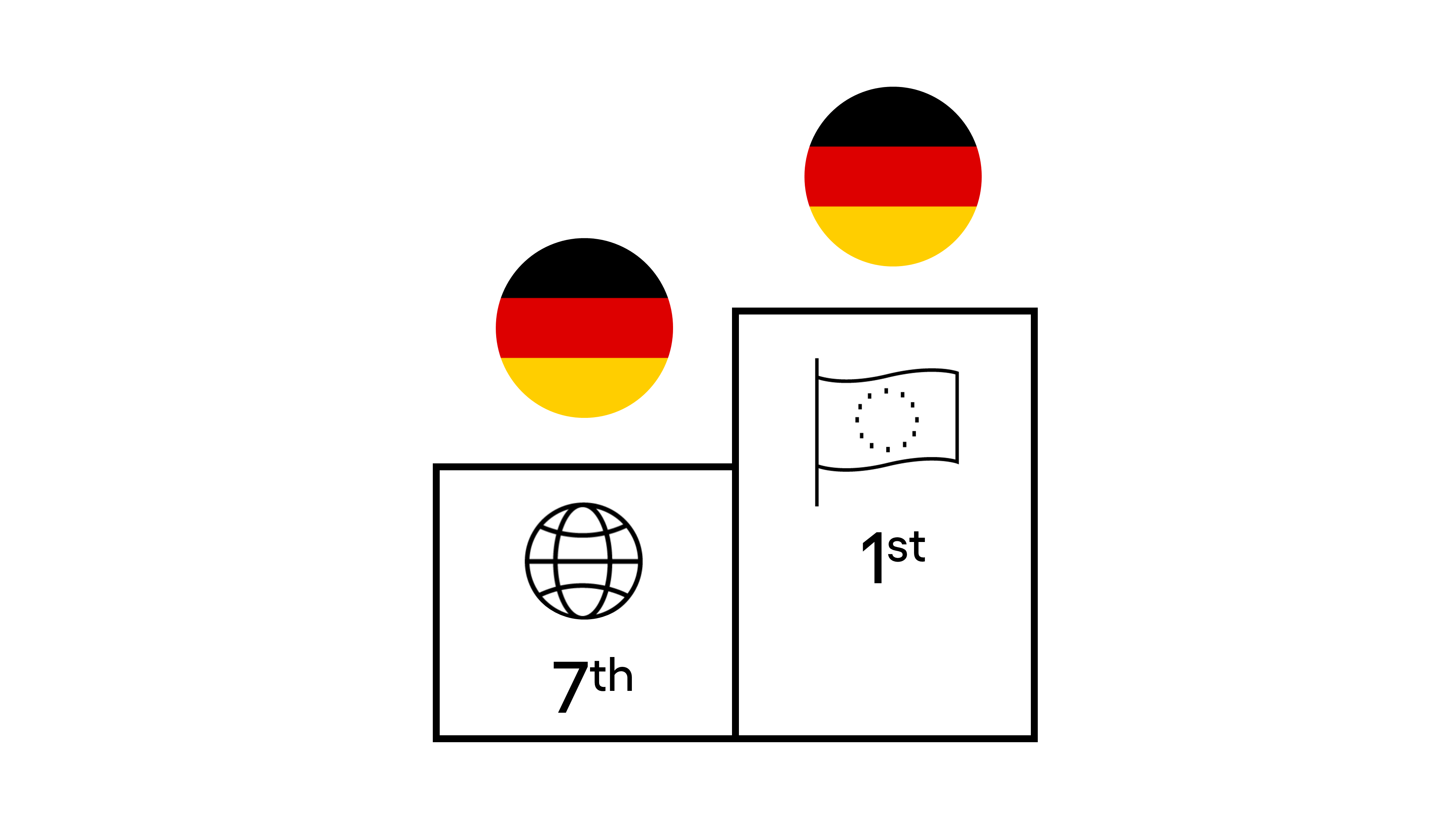
The accounts of the development of the energy sector of Germany go in parallel with the industrial revolution – dating back to the 1830s when the rise in the demand for thermal and mechanical energy necessitated the development of energy infrastructure. The foundation of the gas transportation network was laid down in the 1860s, and the electricity network followed suit after 2 decades, in the 1880s.
However, the power plants and the relevant energy infrastructure remained localized and supplied power in isolated networks to industrial hotspots, especially in the southern and western parts of the country. But the abundance of cheap hydropower in the mystical Alpine region and plentiful coal reserves in the flatlands of North Rhine-Westphalia – bordering Belgium and Netherlands, and later in the Lower Lusatia region – bordering Poland, demanded the development of a consolidated, centralized electrical transmission network in the 1920s and 30s.
Realizing the economic importance of energy infrastructure, regulatory measures were already being taken from the start of the 20th century. The Energiewirtschaftsgesetz (EnWG – The Energy Industry Act) of 1935 was the first regulatory directive to establish a fair energy market in Germany; this enabled access to information regarding commercial and technical activities of energy utilities to the authorities, supply of energy to all customers without prejudice, and regulation of the tariffs.
Despite this, the monopolistic practices of the energy utilities prevailed in the German market, as evident from the categorical exclusion of public electricity and gas suppliers from Anti-competition laws, such as Gesetz gegen Wettbewerbsbeschränkungen (GWB) of 1957.
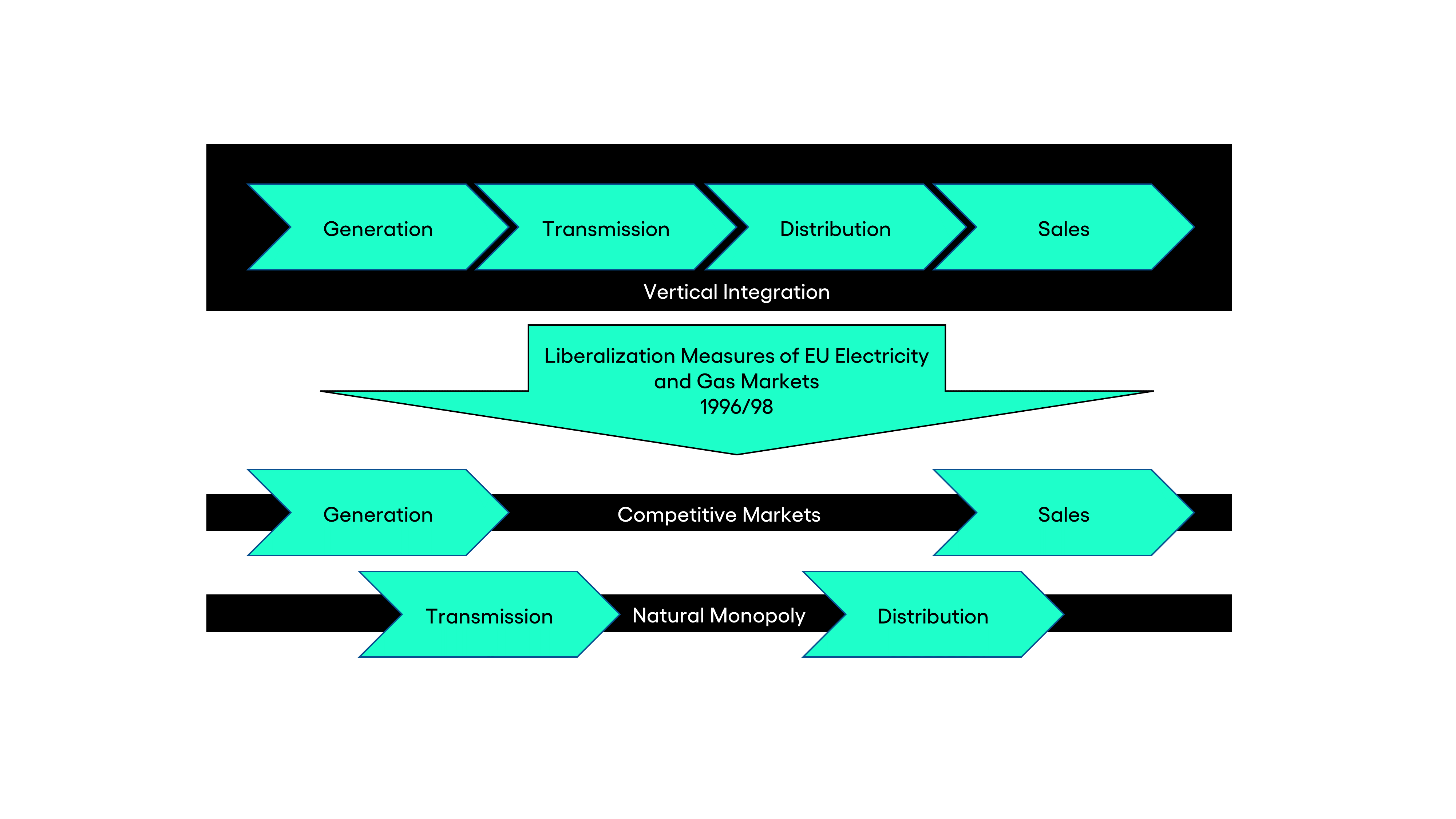
The formation of the European Union in 1993 paved the way for the formation of the EU Internal Energy Market – which entailed the decoupling of different market roles of different players, e.g. Market Operator, Regulator, TSO, DSO, Generators, Consumers, Traders, Utilities, in each member state – in order to improve competition.
The liberalization of the German energy generation and sales sector followed the EU-level directives in 1996 and 1998. (For more info regarding the liberalization in the EU, see our article here). However, the extensive infrastructure costs of transmission and distribution networks, and the pertaining inefficiencies and cost prohibitions associated with developing isolated transmission networks for each individual company, steered the German energy sector towards a natural monopoly for transmission infrastructures – both for gas and electricity.
Bundesnetzagentur (BNetzA) is the premier regulatory body overseeing the development and access of network infrastructures in Germany.
That being said, anti-discrimination regulations are in-place to counter exorbitant tariffs for third-parties and measures have been taken to minimize information asymmetry in the market.
The liberalization of the German Energy Sector i.e. Natural Gas and Electricity is directly aligned with EU-level directives, which were transposed and adopted into the German legislative system. These directives fundamentally provided the guiding principles for 5 key areas of energy markets: Deregulation of Market Activities; Third-Party Access; Regulations; Unbundling of TSOs and DSO; and Grid Development (For a on what TSO and DSOs are , see our Energy 101).
The list below provides the major events that helped liberalize and optimize the German Energy Market over the last 3 decades:
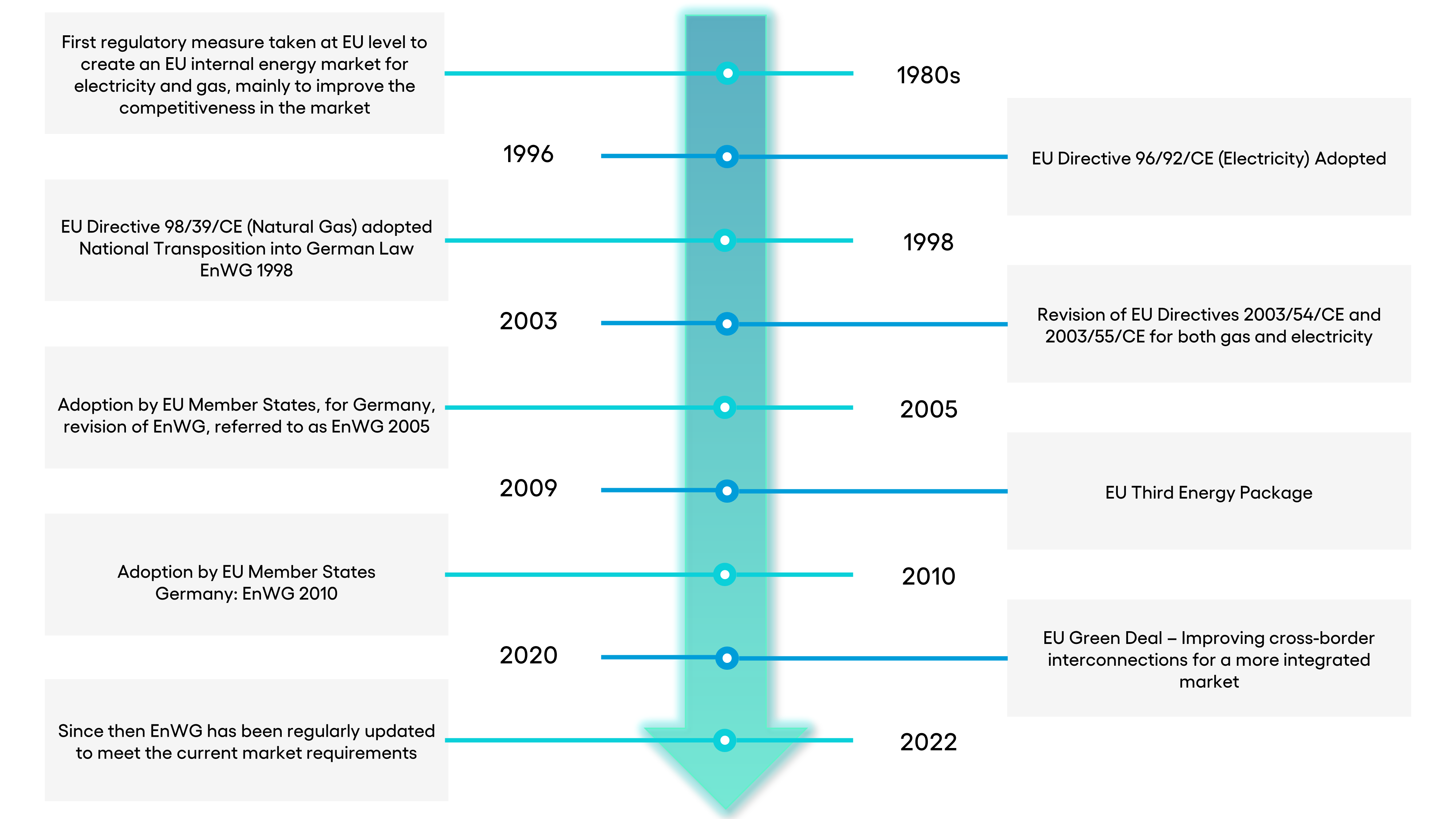
The term ‘Energiewende’, meaning ‘Energy Transition’, was largely adopted during the anti-nuclear and -oil movements of the 1980s. However, in relatively more recent times, has transitioned into a much more collective term for denuclearization and decarbonization of German energy supplies and transitioning into a sustainable and greener economy.
The movement has widespread support among the German populace and has achieved notable success in decoupling German economic growth from carbon emission; observing a +24% economic growth hand-in-hand with a 21% reduction in carbon emissions, from 2005 to 2019.
In Short, the Energiewende sets the tone for 3 key areas:
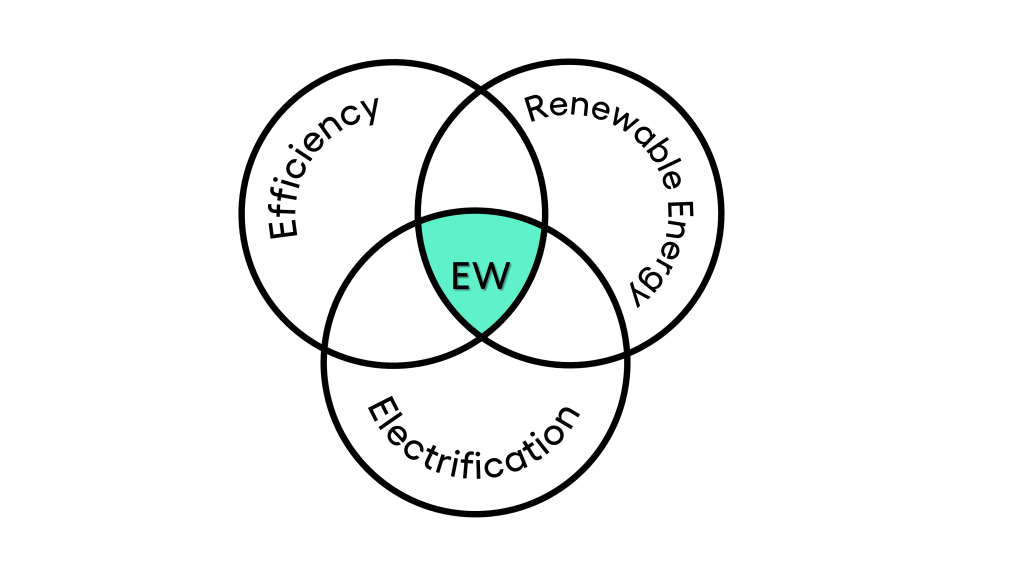
Furthermore, by means of sector coupling, electrification can also be used for fuel production, such as hydrogen and methane, which then can be used for fuel substitutions or as a primary fuel in many sectors, thus indirectly electrifying those sectors and using existing storage as seasonal reserves for renewable energy.
However, there are also growing concerns regarding the further effectiveness and availability of decarbonizing opportunities – as easily adaptable sectors and least disruptive measures have already been exhausted, and further developments require extensive changes in the production and consumption of energy; behavioral changes, and legislating disruptive measures and significant upfront investments – both from government and private sector.
The best way to produce electricity is to generate it as close as possible to the demand centers. However, due to economics and resource availability, this rule is often overlooked. In the case of renewables, the location and climate are the key parameters that define the generation potential.
Generally, wind resources are dictated by global weather patterns and local terrain characteristics, while solar energy is directly linked with the amount of sunlight, which is a function of geographical location.
Good wind resources generally exist near coastal locations (onshore) and at sea (offshore). Additionally, mountain tops and flat, open areas also make for good wind locations. While rivers and valleys are generally considered to be bad wind sites. Due to the geography of Germany, such good wind sites are available along the coastline and flatlands in the northern part of Germany. However, there are small sites with good wind resource located in the southern part of the country as well.
The solar resource generally reduces as we move away from the equator towards the poles; cloud cover also plays a major role in reduced solar output. These two factors are the major concern for solar production in the northern part of the country and thus limits installations to the southern region, where reasonable solar resource exists. However, Germany is not considered a solar-rich country by any definition, with only about 1000 full-load hours of annual sunlight.
Such distribution of renewable resources, limited transmission capacities, and the fact that large industrial centers are located in the south of the country create huge surges in the flows of electricity, depending on the seasonal and daily variations – challenging the stability of the network. This problem is being further exacerbated by the ever-increasing presence of unpredictable demands on the grid, such as electric vehicles. Grid expansion (both transmission and distribution), sector coupling, and electrical storage are being pursued as probable counter-measures to reduce adversarial impacts on the grid.
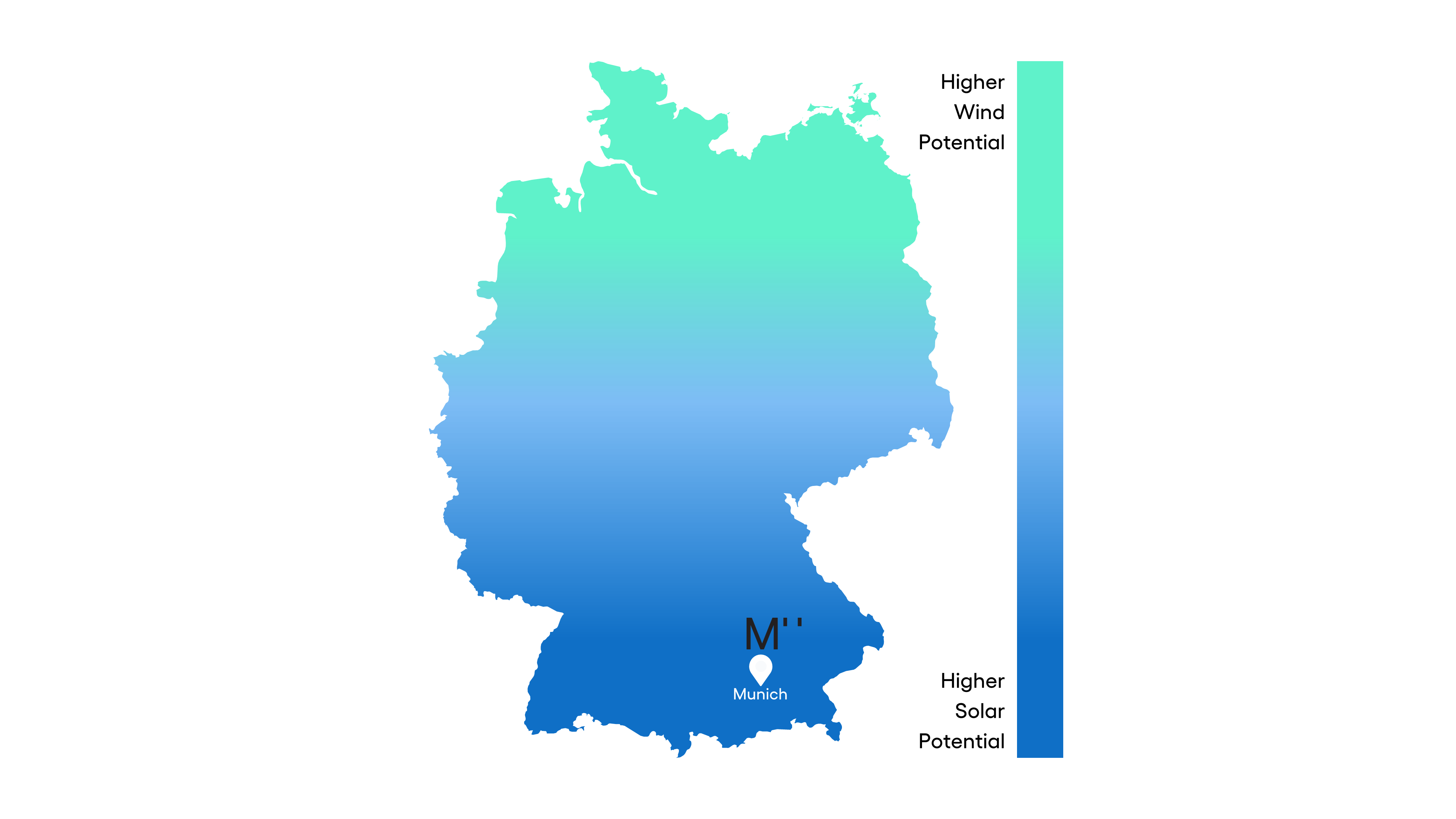
– Last updated on August 2022
– Sources: Apart from Author’s findings/opinions the article is based on information from German Government, BMWi, AG Energiebilanzen e.V., BNetzA, Eurostat, IEA, Agora Energiewende, The World Bank
– Disclaimer: Effort has been taken to ensure the reliability of information; however the accuracy of the information cannot be 100% guaranteed – discretion is thus advised.